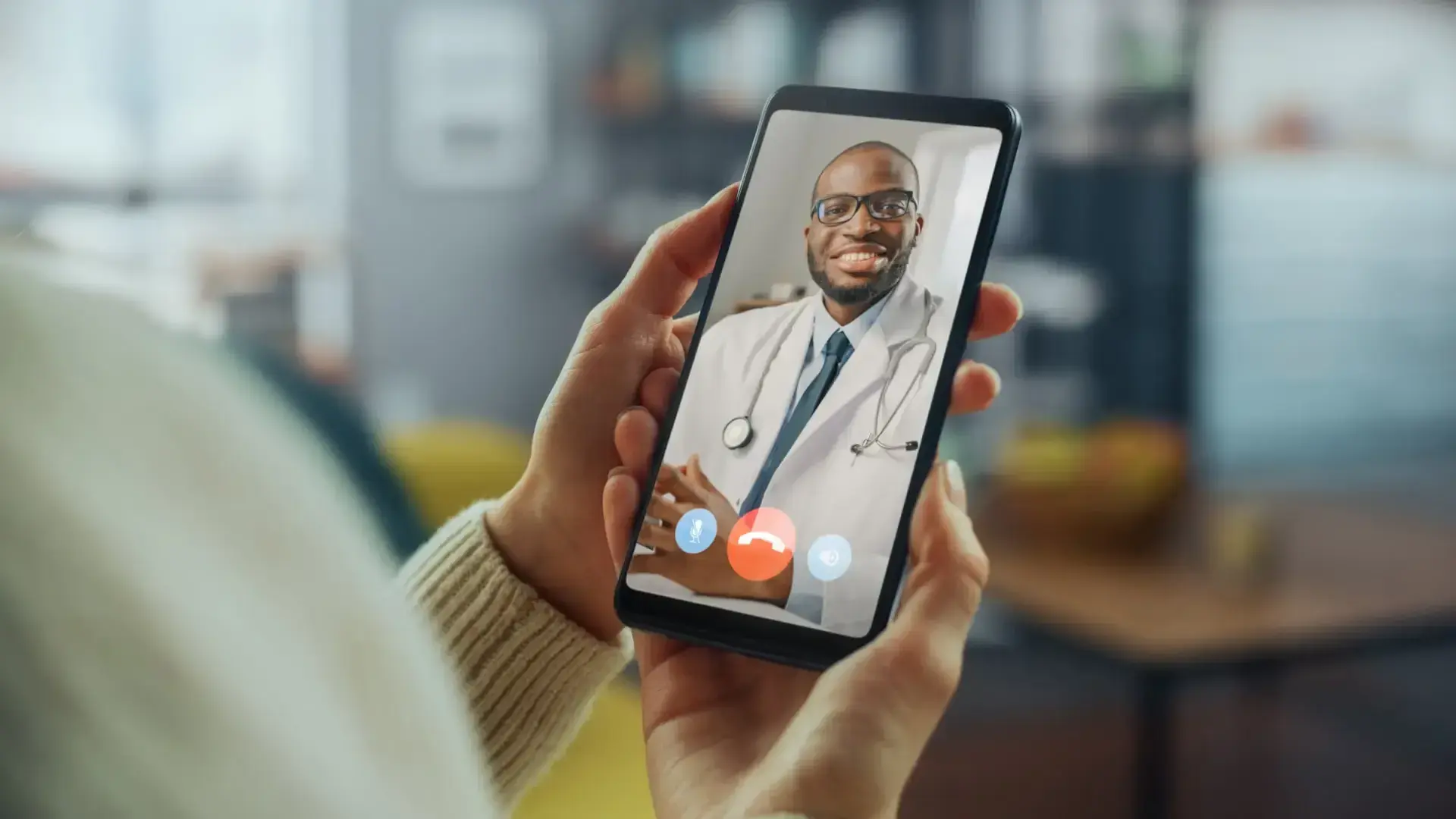
Background noise in telehealth - the new messy handwriting
We delve into how telehealth companies can improve patient care and reduce errors in online appointments through noise cancellation apps.
Doctors and their messy handwriting have been an ever-present trope over the years, and as stereotypes go, it’s a pretty accurate one. In fact, in a lot of cases, the issues that this messy writing cause are no laughing matter. One study called ‘To Err is Human’ by the US Institute of Medicine found that 7000 people die annually in the USA due to errors in prescriptions, with messy handwriting being one of the leading causes.
However during the depths of the COVID-19 pandemic, the average doctor appointment changed considerably. As GPs and hospitals closed their doors to only the most serious of cases, the telehealth method of appointment increased dramatically. Recent studies show it’s now increased 38x from the pre-COVID baseline level. Suddenly inaccuracies and mistakes are less about messy handwriting, and more due to verbal misunderstandings.
The real question is - as we move further along in this pandemic and normality begins to return, will these increased levels remain, or will we drop back down to the levels seen before COVID?
The answer? Early indications suggest that much like remote working and online shopping - the pandemic has triggered a long term trend, and telehealth is here to stay with 40% of patients expecting to continue with it after the pandemic ends. But why is this the case, and what are the implications for the world of audio?
Why are patients choosing Zooms over waiting rooms?
The parallels between the desire for remote healthcare appointments and remote working are striking. What’s driving the continued appetite for telehealth even post-pandemic is convenience and safety.
GP waiting rooms are hectic places. As anyone who has ever been to an appointment past 11am in the morning can attest to, waiting times quickly increase throughout the day, with booking systems struggling to accurately predict the time each appointment takes without the necessary information beforehand to do so. After all, the dichotomy for the reasons for going to your doctors is significant. A diagnosis of a bad cold, leading to a recommended treatment of rest and plenty of fluids could last no more than 5 minutes. However a complaint of chest pains that could indicate respiratory problems could last much longer. Either way, the average GP booking system will slot 10/15 minutes into the system. When you add in late attendees, and the need to write up notes - it’s no surprise that delays are common.
In addition to this, GP surgeries often serve busy metropolitan areas, or extremely sparse and therefore large rural areas - both of which can lead to long or difficult commutes. When you consider that those with mobility issues are often much more likely to need a GP surgery, these issues are compounded - with most of those affected needing to get community-based transport that run to fixed schedules. It’s easy to see how just logging into an online meeting room and being able to do other things as you wait for your doctor is much more preferable than making your way to the surgery before having to sit in a waiting room for a prolonged amount of time (which is over 100 minutes longer compared to a virtual appointment on average). Being a patient doesn’t mean it has to test yours.
From a health perspective, both doctor’s waiting rooms and long commutes are also undesirable if you’re vulnerable - in fact 41%–42% of U.S. adults reported they delayed or avoided seeking in-person care during the pandemic because of concerns about COVID-19. Commuting to a lot of people means public transport which even with a mask on, is a highly transmissible situation. Then when you arrive at the GP surgery, you’re faced with an enclosed meeting room where there is a good chance you’re sat with other sick, and possibly contagious, people. Again - if you’re in the vulnerable category of the population and have a minor issue, you can understand why having this conversation in the safety of your own controlled environment is an attractive one.
Whilst there will always be a place for in-person appointments for those that don’t have access to the correct technology, and for issues that can’t be accurately diagnosed over a call, or even for people who just like the direct human contact, it’s clear that telehealth has opened a lot of people’s eyes to a much more convenient form of healthcare.
Is bad audio bad for your health?
The main obstacle keeping further people from adopting telehealth (57% in fact) is ensuring the quality of the conversation is good enough so that the appropriate amount of care is delivered.
What we’ve realised throughout the pandemic is that not all conversations are born equal. Whilst you may be happy to have your weekly catchup with friends in a noisy room using an online meeting tool, people are a lot less willing to do the same for a conversation with your doctor about an issue that has been worrying you for the past week.
There are multiple reasons for this, with the obvious reason being you need to know that your GP is hearing all your symptoms clearly and accurately, otherwise you risk being misdiagnosed. All it takes is one misheard or missed word due to a car driving past your house as you speak, and the consequences could be potentially significant.
This also applies on the other end of the call - many medicines are hard enough to catch the name of the first time as it is, let alone if the GP has distracting noises in the background of their office. This can easily lead to you getting the wrong medication - the verbal version of a difficult to read prescription. Audio cues can even help a doctor diagnose the issue by itself. A certain cough, sneeze, or rattle can be a great indicator of the problem a patient may have. It’s also worth noting that removing the need to repeat symptoms and treatments, that wasted time in appointments can be reduced.
Another worry about sound quality is that background noise in meetings can increase our stress levels considerably. Increasing stress levels of someone on a call is a problematic enough issue in situations such as calls centres providing customer support, however it’s even greater in the context of telehealth, where callers are often anxious enough due to the nature of the conversation. Causing your patient to be anxious can both create a negative experience for them, or more worryingly, cause them to be less open on sensitive issues making a positive outcome even more difficult.
This can also be compounded by the patient hearing voices in the background at the GP’s end, making them feel like the conversation is less private. Although the other people almost certainly can’t hear the patient, confidentiality is an important aspect of healthcare, so making the patient feel secure that the conversation is private is crucial.
A final reason clear audio is critical, especially for healthcare providers, is accessibility. Over 12 million people in the UK alone have hearing issues. Background noise affects those with hearing difficulties (as well as people with conditions such as hyperacusis or phonophobia) more than those who are unimpaired. So in order to provide good service for people with these conditions, the audio over the appointment needs to be flawless.
Good healthcare through good audio
As mentioned at the start, 40% of people would like to carry on their healthcare remotely beyond the pandemic. There are, however, several obstacles that need to be overcome in order to make this happen, and even increase this number, which is important in order to continue to serve patients in a way that suits them.
Whilst issues such as access to technology and data privacy/integration may be tricky to tackle, the question of audio quality should be an easy problem to fix. It’s clear from the above that telehealth providers need to look at ways of enabling organic sound in their sessions, in order to replicate the environment of an in-person appointment - that is, one without distracting and stressful background noise.
Tools such as background noise cancelling apps can be installed by telehealth providers in order to remove the background noise from their appointments. Through AI, noise cancelling apps can allow the doctor and patient to communicate clearly, without the fear of everyday background noise such as washing machines or barking dogs to affect the conversation from the patient’s end, and other patients or staff members from the doctor’s end.
By removing these distractions, the telehealth industry can help remove not only the audio equivalent of messy doctor’s handwriting causing misdiagnosis or inaccurate prescriptions, but also create a quicker, cheaper, and considerably less stressful experience for patients going forward. And without the barrier of poor audio, telehealth can continue to soar in a post-pandemic environment.
You can read more about how background noise is affecting the telehealth industry, as well as the call centre, hybrid working, and remote learning industries in our brand new whitepaper - ‘The role of audio in an increasingly digital world’ or start a 7 day free trial of our app and try it yourself.


